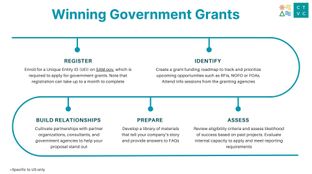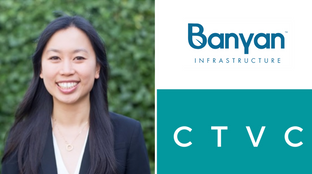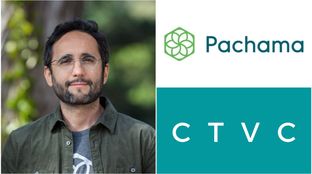
🌎 Get ready with me: Government grants edition 💅💵
A founder’s guide to winning non-dilutive funding with Elemental Excelerator
We caught up with Brennan Spellacy, CEO of Patch, about the platform for negative emissions which just became Andreessen Horowitz’s latest climate investment.

We caught up with Brennan Spellacy, CEO of Patch, about the platform for negative emissions which just became Andreessen Horowitz’s latest climate investment. Brennan explains how Patch removes companies’ carbon with just four lines of code, and the company’s perspective on how carbon offsets complement – don’t detract from – work to decarbonize operations.
What led you to start Patch?
I studied chemical engineering at McGill with the intention of working in renewable energy. Instead I ended up becoming a programmer at Shopify and working with my now co-founder, Aaron, at Sonder. We left that job with a 10-page pitch deck and a desire to bring our career arcs back to climate.
We built Patch on the premise that climate can be addressed through two broad buckets: 1) decarbonization and 2) carbon removal. Although there’s still a massive amount of work to be done on decarbonization, we actually felt like the Zeitgeist of decarbonization had hit. Whether it’s the levelized cost of renewables reaching coal, Tesla making EVs cool, or Gen-Zs shopping consciously, decarbonization has become mainstream. Compare that to carbon removal, where the climate models have us needing to remove 10-15 gigatonnes of CO2e per year and yet society has barely gotten started. Patch is our attempt to kickstart the carbon removal part of the puzzle.
Why are APIs a powerful approach for this use case? Walk through how a company would integrate Patch into their business.
Simply put, an API is an interface that a computer can understand. An API allows programmers to write interactive software – like a Lego brick which can be built into a host of different software systems.
As an example, with our integration with TripActions, a corporate travel and expense management platform, customers can natively decide if they want to neutralize or partially compensate their travel emissions. One of our early customers, Carbon Zero, launched a credit card where they dedicate a piece of the purchase to carbon removal. Without the 3-5 lines of Patch’s API code, none of these use cases would be possible given the scale and complexity of manually incorporating carbon removal into workflows.
Who are your customers today?
We’re working with a host of tech-enabled, ecommerce, logistics, finance, and banking companies. In addition to TripActions and Carbon Zero, our initial customers have been in the travel & hospitality and fintech spaces. Sonder is a customer, as are a couple of private equity funds who are not only neutralizing their own operational footprint, but are extending the service to their portfolio companies. Payments companies are also highly attune to what Stripe and Shopify are doing with carbon removals, and trying to decide if they should build a tool in house, or use a third party vendor like Patch. It’s the classic build versus buy debate.
Are these customers taking steps to decarbonize in addition to paying for removals?
Yes, most of our customers are also attempting to decarbonize – that’s actually why Patch is so compelling for them. I tweeted about this. Typically sustainability teams will have half of their headcount spending time on decarbonization approaches, and the other half working on deploying the carbon program budget. Because Patch abstracts away the complexity of handling carbon programs and earns individual companies better negotiating power, a company’s full sustainability team can now focus on internal decarbonization. We see Patch as complementary to decarbonization, as opposed to an alternative replacement.
Do you host both removals and offsets credits?
We offer the full spectrum of offsets from traditional avoided emissions credits like prevented deforestation or renewable energy development, through to permanent removals like direct air capture. We operate like a marketplace and let our vendors set prices, and our customers determine what to buy. We profit from a usage fee calculated on the total tonnage pushed through the system, so we’re truly agnostic to price.
Do customers get to pick their removals suppliers?
We’re very transparent about our vendors – so much so that you’d have enough information to go around Patch if you wanted to try and manage the vendor relationship directly. In practice, customers stick to our platform since going direct takes longer, is more expensive, and is operationally complex to ensure proper fulfillment. We offer pre-built portfolios based on a company’s budget and volume demand, but also allow complete flexibility and authority to custom select. We’re actually not opinionated about specific types of technologies or approaches, but instead ensure that the data is comprehensive and easy to understand so that our customers have the power to make decisions.
How do you vet carbon removal suppliers?
Our role is to certify the veracity of information submitted to our platform. We don’t set the standards and are not a verifier ourselves, but we do ensure proof of other proxies of legitimacy. For DAC, for example, there’s no formal verification standard, but a vendor might have a 45Q application form or Microsoft RFP documentation. Because we operate like a marketing channel, it’s really up to the suppliers to position themselves as best as possible to move their product.
How do you see yourself integrating or working with existing carbon marketplaces, verifiers, and audit services (e.g., CarbonChain, Persefoni, Sinai)?
Anyone can use the API, but for the most part anything that claims to be a marketplace is primarily going to be competitive – similar to how Airbnb competes with Expedia and Booking.com for listings. We do sell to the carbon accounting tools, which focus on emissions quantification, reduction, and compensation (aka carbon removal). The compensation piece is a must have feature for these products, but it isn’t a differentiator – which makes it a great choice to buy vs build. You can think of Patch as the “Plaid” for carbon accounting. But I like to think of Plaid as the Patch for banking.
For example, Equilibrium offers a full suite of sustainability tools to quantify and reduce their customer companies’ emissions. After taking actions, most users are still left with an emissions footprint, so instead of Equilibrium building that infrastructure internally, they use Patch as a white-labeled embedded offset marketplace and can still control the customer journey during that final step.
What has corporate interest in carbon removal looked like so far?
We have a few things to refine before we hit the product market fit growth machine. But I will say that it’s very rare if people don’t take the first, second, or third phone call, even across industries where you wouldn’t expect interest in carbon offsetting. It’s something that a lot of companies and investors are thinking about and is ultimately going to be built into the fabric of commerce. So we need to build the infrastructure for that now.
We’ve really benefited from the leaders at Stripe and Microsoft who have made it cool to lead on offsets. We’re happy to lean on others for customer education, and supply the four lines of code to make it happen.
As more companies (like Sweetgreen this week) do the hard operational work to reduce their carbon footprints, how do you see the role of carbon removal fitting in?
Patch exists for the reason that this decarbonization work is hard; companies shouldn’t spend people power on carbon offsets and removals. There’s a sizable portion of decarbonization that’s fairly straightforward (e.g., tweaking operations, traveling less), but the later incremental avoided tonnes get much harder. When marginal decarbonization actions are no longer aligned with cost cutting (because expensive capex retrofits are the only pathway), then paying for removal in the short term is a fast way to drive impact, while simultaneously working towards decarbonization in the long term. That’s why we need to reach a meaningful scale in carbon removal demand to drive down the cost curve and make removals more cost competitive with difficult decarbonization work.
What will it take for permanent carbon removal solutions to compete on price with temporary nature-based pathways?
The key piece will be to siphon more capital towards permanent forms of carbon removal. The challenge is that there hasn’t historically been an easy way to build an entire portfolio of permanent carbon removals. We have one client who spends $1m / year on nature-based or avoidance offsets. We’ve worked with them to carve out 30% of that $1m budget to go towards permanent carbon removal. Replicated over many large offset budgets over the next few years, we can start to see a world where demand for carbon removals actually traverses the cost curve fairly quickly.
Some of our carbon removal suppliers anticipate that at a few megatons of scale, they’ll be able to cut prices down ~80%. Scale doesn’t just correlate with better technology, but it also means better cost of capital. As corporate demand for carbon removal ramps up and suppliers can show repeatable demand, the per unit cost comes down, which in turn increases demand, and so on so forth. We think that the permanent removals market will act very similarly to how solar played out a few decades ago when it quickly dropped from $40.00 / kWh to now $0.04 / kWh – and crushed coal out of the market.
You just raised a $4.5m Seed round led by Andreessen Horowitz. Congratulations! How serious are a16z’s climate motivations?
Andreessen and Sequoia have both started picking up the pace on their climate investments. Sequoia just backed Joro and Watershed, which is great. Jeff Jordan, at a16z, was the one who led our deal and is a very climate focused person. If you look at some of his other deals, like Lime which replaces cars with electric last mile solutions, he’s invested a lot in climate adjacent-areas – although Patch is more “climate-direct.” In addition to his personal climate ethos, Jeff specializes in marketplaces. Along with Bill Gurley and Sarah Tavel, you can’t really get a better marketplace mind than Jeff Jordan.
Are you interested in helping to build the “Plaid” for carbon removal? Patch is hiring across engineering, design, sales and marketing. Are you interested in how four lines of code can make your company carbon neutral / negative? Check out Patch.io for how to get set up.
Interested in more content like this? Subscribe to our weekly newsletter on Climate Tech below!

A founder’s guide to winning non-dilutive funding with Elemental Excelerator

Infrastructure investing for impact with Banyan Infrastructure's Amanda Li

Venturing into nature with Diego Saez-Gil at Pachama